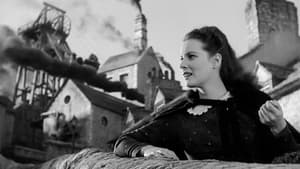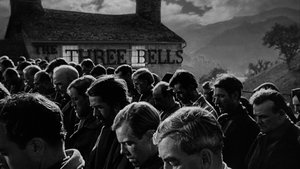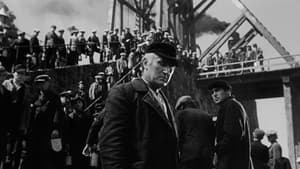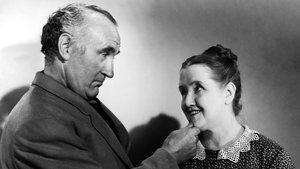Contact: info@alwanfilm.com
Video Sources 0 Views
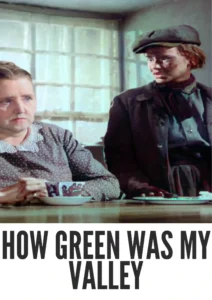
How Green Was My Valley 1941 Colorized
Synopsis
How Green Was My Valley 1941 Colorized Review: A Timeless Masterpiece of Family and Tradition

Introduction
When we think of iconic films from Hollywood’s Golden Age, How Green Was My Valley (1941) stands out as one of the most poignant and emotionally charged films of its era. Directed by John Ford, a filmmaker renowned for his powerful depictions of American landscapes and human stories, How Green Was My Valley explores the life of a Welsh mining family at the turn of the 20th century. The film is a reflection on memory, community, and the inevitable passage of time, all framed within the broader context of industrialization and social change.
Adapted from Richard Llewellyn’s novel of the same name, How Green Was My Valley garnered critical acclaim upon its release, winning five Academy Awards, including Best Picture, Best Director, and Best Supporting Actor for Donald Crisp. The film is often remembered for its evocative cinematography, memorable performances, and deeply moving narrative. In this article, we will explore the key elements that make How Green Was My Valley a masterpiece of cinema, examining its direction, cast, themes, and its lasting impact on film history.
Check The Full Colorized Movies List
Check Our Colorized Movies Trailer Channel
Understanding How Green Was My Valley 1941 Colorized: Director, Cast, and Genre
Director’s Vision
John Ford, one of Hollywood’s most celebrated directors, is best known for his work in the Western genre, with films like Stagecoach (1939) and The Searchers (1956). However, How Green Was My Valley showcases Ford’s versatility as a director, as it departs from the rugged American landscapes of his Westerns and delves into the lush, green valleys of Wales. Ford’s vision for the film was to capture the essence of a vanishing way of life—the tight-knit, coal-mining community of the Morgans, who struggle with the changes brought on by industrialization and modernity.
Ford’s direction is understated yet powerful, allowing the film’s themes and characters to resonate without the need for overt sentimentality. He expertly balances the beauty of the valley with the harsh realities faced by its inhabitants, creating a film that is both visually stunning and emotionally complex.
The Iconic Performance of Actors
At the heart of How Green Was My Valley is a stellar ensemble cast, led by young Roddy McDowall as Huw Morgan, the youngest son of the Morgan family. McDowall’s performance as Huw is both tender and mature, capturing the innocence of childhood while also conveying the pain of growing up in a changing world. His portrayal of Huw’s coming-of-age journey is central to the film’s emotional core, making him a relatable and sympathetic protagonist.
Donald Crisp, who won the Academy Award for Best Supporting Actor, plays the role of Gwilym Morgan, the patriarch of the Morgan family. Crisp’s portrayal of a proud yet compassionate father is one of the film’s standout performances. He brings a quiet strength to the role, embodying the dignity and resilience of the working-class miners.
Maureen O’Hara, as Angharad Morgan, Huw’s older sister, delivers a deeply emotional performance. Her character’s struggle between love and duty adds a layer of complexity to the film’s narrative, highlighting the sacrifices made by individuals for the sake of family and tradition.
Other key performances include Sara Allgood as Beth Morgan, Huw’s loving and strong-willed mother, and Walter Pidgeon as Mr. Gruffydd, the village preacher who becomes a mentor to Huw. Each actor contributes to the film’s rich tapestry of characters, making the Morgan family and their community feel authentic and relatable.
Exploring the Genre
While How Green Was My Valley is often categorized as a drama, it also contains elements of historical fiction and social realism. The film is a deeply personal exploration of family dynamics and the impact of industrialization on traditional ways of life. It’s a film about memory and nostalgia, reflecting on a time and place that, even in 1941, was slipping into the past.
The film’s exploration of class struggle and labor issues also places it within the broader context of social realist cinema. The harsh working conditions of the coal miners, the labor disputes, and the community’s gradual disintegration are portrayed with sensitivity and authenticity, making How Green Was My Valley a film that resonates beyond its specific setting.
Exploring the World of How Green Was My Valley 1941 Colorized: Plot and Characters
Detailed Synopsis
How Green Was My Valley tells the story of the Morgan family, a Welsh mining family living in the village of Cwm Rhondda. The narrative is told through the eyes of Huw Morgan (Roddy McDowall), the youngest son, who reflects on his childhood and the gradual decline of his family and community. The film begins with an adult Huw narrating his memories, starting with a time when the valley was green, the coal mine was thriving, and his family was whole.
As the story unfolds, we witness the challenges faced by the Morgans, including the harsh working conditions in the coal mine, labor disputes, and the economic hardships that drive the family apart. Huw’s father, Gwilym (Donald Crisp), is a respected leader in the community and a strong advocate for the rights of the miners, but he struggles to keep his family together as his older sons leave to find work elsewhere.
Huw’s own coming-of-age journey is a central focus of the film. He is injured in a mining accident but eventually recovers with the help of Mr. Gruffydd (Walter Pidgeon), the village preacher who encourages him to pursue an education. Huw’s bond with Mr. Gruffydd is one of the film’s most touching relationships, as the preacher becomes a mentor and father figure to the young boy.
Meanwhile, Huw’s sister Angharad (Maureen O’Hara) falls in love with Mr. Gruffydd, but their relationship is complicated by societal expectations and class differences. Angharad ultimately marries another man, leading to a sense of unfulfilled longing and sacrifice that runs throughout the film.
As the valley’s once-thriving green landscape is slowly overtaken by industrialization and pollution, the Morgans face increasing hardships. The film ends on a bittersweet note, with Huw reflecting on the loss of his family, his community, and the way of life that once defined the valley.
The Art of Film Colorization
Understanding the Process
Though How Green Was My Valley was released in black and white, the use of lighting and cinematography gives the film a rich, almost painterly quality. If the film were to be colorized today, it would involve a complex process of adding hues to the monochrome footage, either manually or using advanced digital technology. In the early days of cinema, colorization was a painstaking process that involved hand-painting each frame. Today, modern digital techniques allow for more accurate and realistic colorization, preserving the original aesthetic while enhancing the visual experience.
However, many cinephiles and purists argue that the original black-and-white cinematography of How Green Was My Valley should remain untouched. The film’s stark contrasts and shadow play are essential to its mood and thematic depth, and some believe that colorization would detract from its original artistic vision.
Development Over Time
The debate over colorization has been ongoing since the 1980s, when several classic films were re-released in colorized versions. While some audiences appreciate the new visual appeal that color brings, others argue that black-and-white films are part of a director’s intended aesthetic. With How Green Was My Valley, this debate is particularly relevant, as the black-and-white cinematography is integral to the film’s tone and atmosphere.
Early Colored Films: A Brief History
Emergence of Early Colored Techniques
Before the advent of Technicolor, filmmakers experimented with various color processes, such as hand-painting frames, tinting, and toning. One of the earliest methods, Kinemacolor, was developed in 1906 and used two color filters to create a limited range of hues. Although not widely adopted, it laid the groundwork for more advanced color processes.
Technicolor, introduced in the 1920s, revolutionized the industry by using three separate film strips to capture red, green, and blue light, producing vivid and realistic colors. By the time How Green Was My Valley was released, Technicolor had already been used in films such as The Wizard of Oz (1939) and Gone with the Wind (1939). However, John Ford and his cinematographer, Arthur C. Miller, chose to shoot How Green Was My Valley in black and white to emphasize the film’s nostalgic and somber tone.
How Green Was My Valley 1941 Colorized and Its Visual Impact
Cinematic Brilliance in Black and White
While some films from the 1940s were being shot in Technicolor, John Ford made a deliberate choice to keep How Green Was My Valley in black and white. This decision proved to be crucial to the film’s success. The stark contrasts between light and shadow evoke a sense of loss and memory, giving the film a timeless quality. Cinematographer Arthur C. Miller’s use of deep focus and natural lighting creates an immersive atmosphere, making the valley itself a character in the story.
The lack of color in the film also heightens the emotional intensity of the performances. Without the distraction of vibrant colors, the viewer is drawn into the characters’ faces, their expressions, and the nuances of their interactions. The film’s monochromatic palette serves to reinforce the themes of industrialization and decay, as the once-green valley is slowly consumed by coal dust and smoke.
The Decision to Avoid Colorization
Although the film was not colorized, the debate over whether it should be is one that continues to be discussed among film historians. Some argue that adding color to the film would detract from its artistic integrity, while others believe it could bring new life to the visual storytelling.
Influence and Legacy: How Green Was My Valley 1941 Colorized’s Impact on Cinema
The Lasting Influence of How Green Was My Valley
How Green Was My Valley left an indelible mark on the history of cinema. Its themes of family, community, and the impact of industrialization have resonated with audiences for decades, making it a film that feels both specific to its time and universal in its appeal. Its success at the 1942 Academy Awards, where it won Best Picture over Citizen Kane, solidified its place in the canon of classic Hollywood films.
Directors such as Steven Spielberg and Martin Scorsese have cited John Ford as a major influence, and How Green Was My Valley is often referenced as an example of Ford’s ability to tell deeply human stories within epic landscapes. The film’s exploration of memory, loss, and the passage of time continues to inspire filmmakers today.
Conclusion
How Green Was My Valley (1941) is a testament to the power of cinema to evoke emotion, tell compelling stories, and reflect on the human condition. John Ford’s direction, combined with outstanding performances from Roddy McDowall, Donald Crisp, and Maureen O’Hara, creates a film that remains as poignant and relevant today as it was over 80 years ago. Its success in capturing the spirit of a vanishing way of life, coupled with its striking visual style, ensures that How Green Was My Valley will continue to be celebrated as one of the great masterpieces of film history. Whether seen through the lens of nostalgia, social commentary, or pure cinematic artistry, this film continues to leave a lasting impression on all who watch it.


